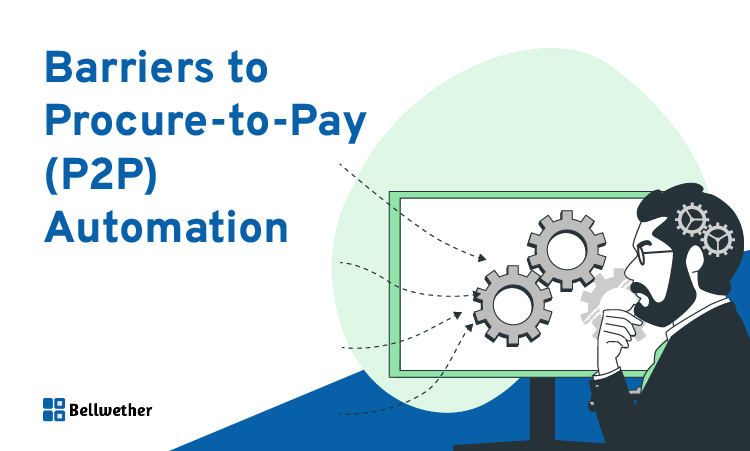Procure-to-pay (P2P) automation is the use of technology to streamline and optimize the procurement process – from purchase order creation to vendor payment and everything in between. When your company has implemented a software that supports P2P automation, you will automatically see increased efficiencies and an improvement in accuracy.
In simple terms, P2P automation can automate manual, repetitive, and time-consuming tasks, freeing up resources and improving efficiency while reducing errors and ensuring data accuracy. This improves the quality of procurement decisions. Despite the many benefits of P2P automation, there can still be barriers to its implementation and successful adoption.
Let’s have a look.
Barriers to Procure-to-Pay (P2P) Automation
Barriers to procure-to-pay (P2P) refer to any challenges or obstacles that hinder the smooth and efficient flow of goods and services from purchase to payment. Some common barriers include:
- Lack of standardization
Most times in an organization, there are various departments that work together. Similarly, your organization might also have various departments working together and different departments might have varied processes. Independent departments and processes may have different requirements and procedures, leading to confusion and inefficiencies. This could be a major barrier.
- Poor supplier management
Poor relationships with your suppliers, insufficient supplier information, or lack of supplier performance monitoring can lead to supply chain disruptions within your organization. This becomes a barrier and hence, it becomes essential to manage suppliers efficiently and maintain a healthy and long-lasting relationship with them.
- Insufficient data
This is another major concern for any company. Incomplete or inaccurate data, such as incorrect vendor information or incorrect purchase order amounts, can slow down P2P processes in your organization and lead to unwanted errors.
- Ineffective communication
As there are multiple departments involved in a company, it is likely that there will be communication errors. Poor communication between departments, such as procurement, accounts payable, and finance, can lead to delays and errors in your organization’s P2P processes.
- Resistance to change
It is a common norm that change is usually not easily accepted. The same might happen in your organization when you try to implement new processes and make changes to the existing, already-established traditional purchasing processes. Employees may resist changes to established P2P processes and may be unwilling to adopt new technologies or procedures. Employees may not fully understand how to use the new technology, leading to slow adoption and decreased efficiency.
- Lack of technology infrastructure
This barrier, unfortunately, is more common than we might think. A company may lack the necessary technology infrastructure, such as hardware, software, or internet connectivity, to support P2P automation. For start with, you need a robust procure-to-pay software to bridge the technological gap.
- Budget and technological constraints
A company might not always be able to afford to automate its traditional procurement processes. They may face budget constraints, making it difficult to invest in P2P automation technology and services. Further, P2P automation may require integration with existing systems, such as ERP or accounting systems, which can be complex and time-consuming, making it a major barrier.
- Lack of training and support
This could be a major barrier if companies do not provide sufficient training and support to employees. If there is no proper training, it will make it difficult for the employees to use the technology effectively and get the best out of it.
In conclusion, while P2P automation offers many benefits to your company, there can still be barriers to its implementation and successful adoption. To overcome these barriers, your organization needs to adopt a strategic approach that includes planning, technology selection, employee training and support, data management, and continuous improvement.
By addressing these barriers, your organization can successfully implement P2P automation and realize the many benefits of a streamlined and efficient procurement process. Bellwether’s procurement software can help with efficient P2P automation and overcome these barriers successfully.
If you are still running your requisition, approval, and other processes manually, request a demo to learn how Bellwether can help you automate it.







